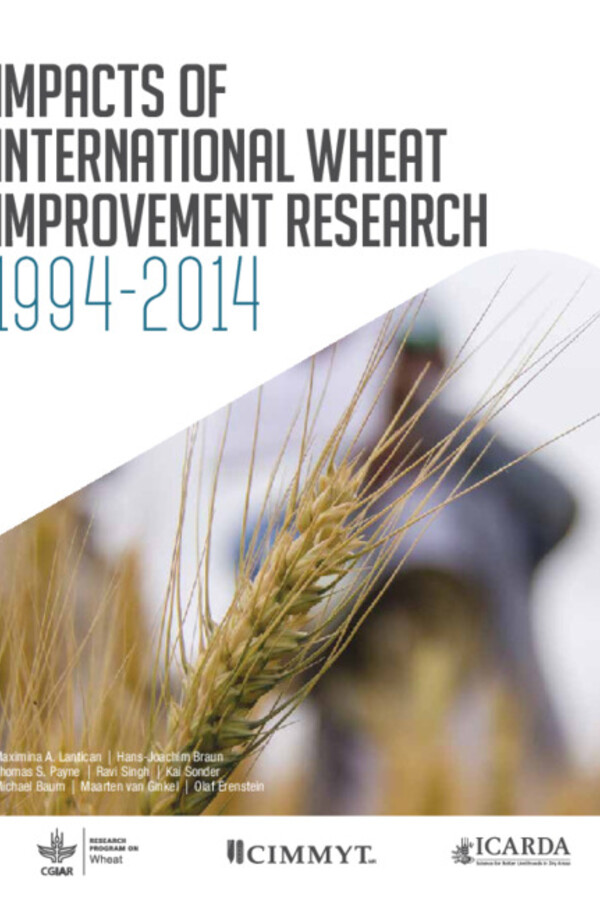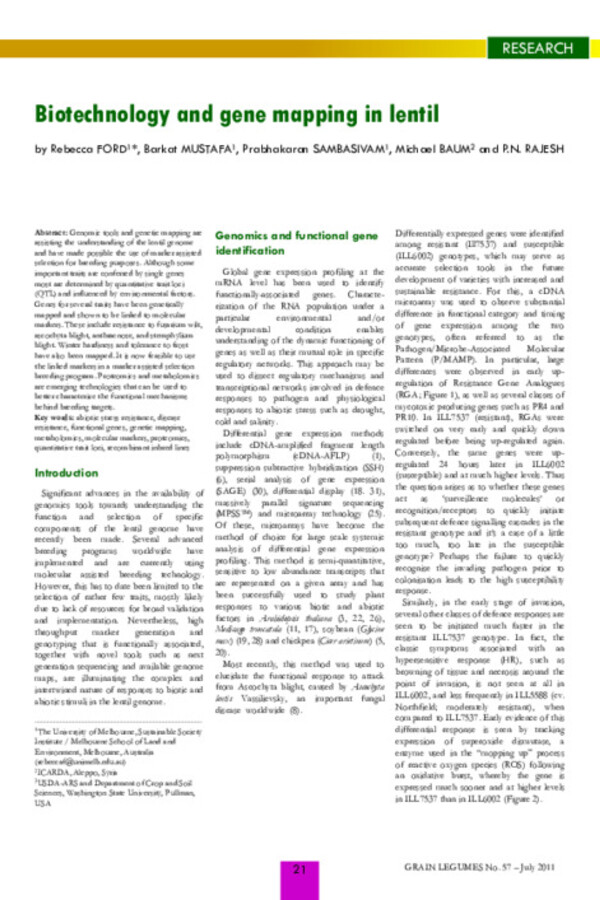
Michael Baum
Dr. Michael Baum is director of ICARDA’s Biodiversity and Crop Improvement Program, which comprises 30 scientists and 67 technical staff whose work ranges from crop breeding and cereal and legume pathology to virology and pollinators. Since joining ICARDA in 1992 as a biotechnologist, he has overseen ICARDA’s biodiversity and crop management work in a number of countries across the Middle East and North Africa.
Dr. Baum has been instrumental in establishing ICARDA’s partnerships with global research institutes, including the Centre for Biotechnology in Tunisia; Hannover and Frankfurt University in Germany; Cornell University in the United States; the Australian Center for Plant Functional Genomics; and other CGIAR centers. He has attracted over $10 million in funding to build ICARDA’s biotechnology program and strengthened biotech research across the dry areas.
Dr. Baum has published over 110 peer-reviewed journal articles, 30 book chapters, and 40 conference papers. He was also guest professor at Ghuangzhou University, China, between 2009 and 2012, and received the ‘Frosty Hill Fellowship’ from Cornell University in 2000. Throughout his career, he has supervised scores of post-doctoral fellows and Ph.D. students. Dr. Baum holds a Ph.D. in plant breeding and cytogenetics from the University of Göttingen in Germany.
Michael Baum's Publications

Engineering Abiotic Stresses in Crops by Using Biotechnological Approaches

Chapter 8 - Lentil genome sequencing: Establishing a comprehensive platform for molecular breeding
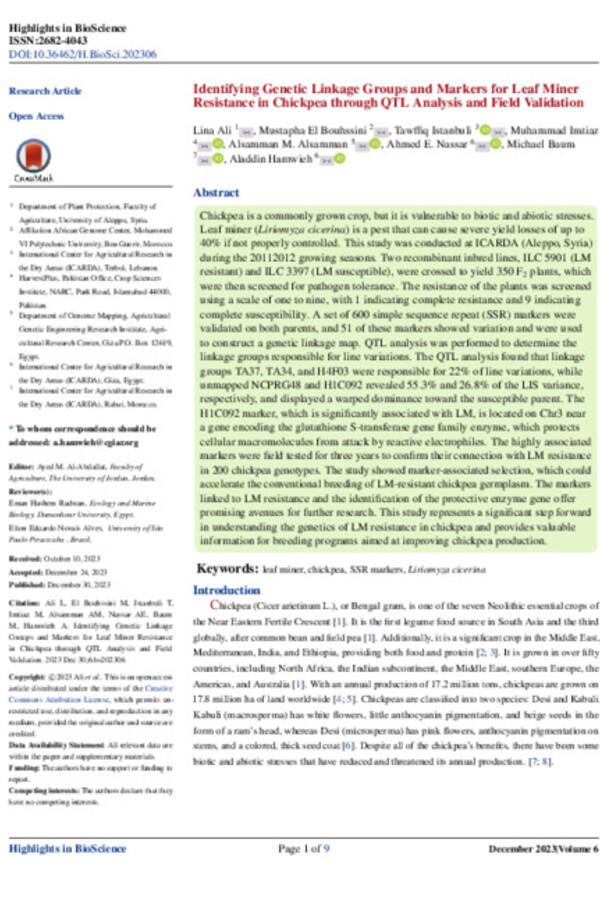
Identifying Genetic Linkage Groups and Markers for Leaf Miner Resistance in Chickpea through QTL Analysis and Field Validation

Meeting the Challenges Facing Wheat Production: The Strategic Research Agenda of the Global Wheat Initiative

Novel Genomic Regions Linked to Ascochyta Blight Resistance in Two Differentially Resistant Cultivars of Chickpea

Genetic Dissection of Heat Stress Tolerance in Faba Bean (Vicia faba L.) Using GWAS

Genomic regions associated with herbicide tolerance in a worldwide faba bean (Vicia faba L.) collection

Genomics-assisted lentil breeding: Current status and futurestrategies

Are continued public sector and CGIAR investments on wheat crop improvement research justifiable? A Moroccan case

Comprehensive analysis of the gene expression profile of wheat at the crossroads of heat, drought and combined stress

The Global Durum Wheat Panel (GDP): An International Platform to Identify and Exchange Beneficial Alleles

Evaluation of morpho-physiological traits under drought stress conditions in barley (Hordeum vulgare L.)

Intra-cultivar variability at microsatellite loci in date palm cultivars across the GCC countries

Assessing Genetic Diversity of Shishi Date Palm Cultivars in Saudi Arabia and Qatar Using Microsatellite Markers

Genetic and transcriptional variations in NRAMP‑2 and OPAQUE1 genes are associated with salt stress response in wheat.

Slow rusting of bread wheat landraces to Puccinia striiformis f.sp. tritici under artificial field inoculation
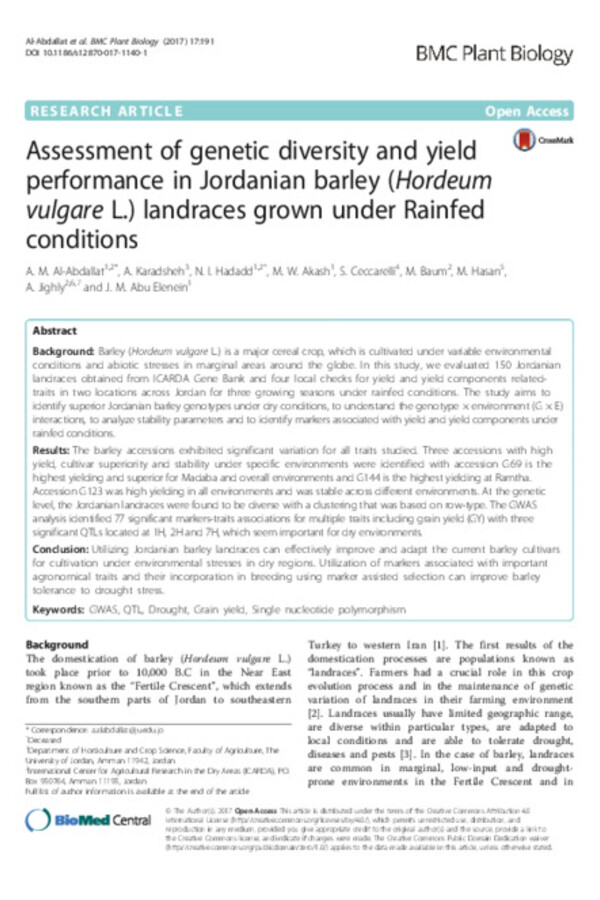
Assessment of genetic diversity and yield performance in Jordanian barley (Hordeum vulgare L.) landraces grown under Rainfed conditions
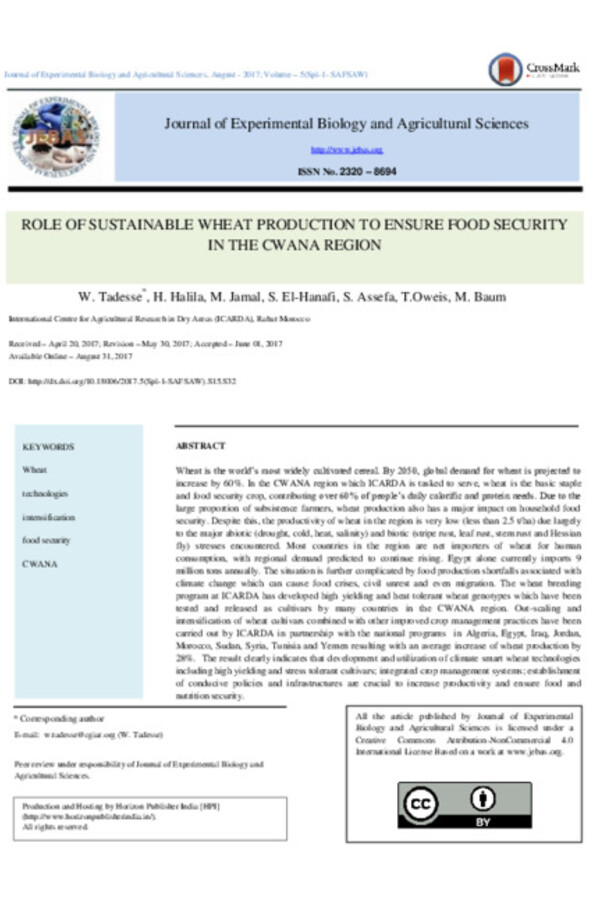
Role of Sustainable Wheat Production to Ensure Food Security in the CWANA region

Genetic variations of HvP5CS1 and their association with drought tolerance related traits in barley (Hordeum vulgare L.)

Development of a panel of unigene derived polymorphic EST-SSR markers in lentil using public database information

Identification and Characterization of Salt Tolerance of Wheat Germplasm Using a Multivariable Screening Approach

Morphological and molecular genetic diversity of Syrian indigenous goat populations

Genetic variation in winter barley and selection of high yielding lines

Genome-Wide Association Mapping of Yield and Grain Quality Traits in Winter Wheat Genotypes

Current knowledge in lentil genomics and its application for crop improvement

Rare allele of HvLox-1 associated with lipoxygenase activity in barley (Hordeum vulgare L.)

Association Mapping of Resistance to Yellow Rust in Winter Wheat Cultivars and Elite Genotypes

Association Analysis of Genotypic and Phenotypic Traits Using SSR Marker in Durum Wheat

Breeding progress for yield in winter wheat genotypes targeted to irrigated environments of the CWANA region

Genetic diversity among summer and winter Beauveria bassiana populations as revealed by AFLP analysis

Genetic differentiation in Pyrenophora teres f. teres populations from Syria and Tunisia as assessed by AFLP markers

Pathogenic and genetic diversity of Didymella rabiei affecting chickpea in Syria

Single Nucleotide Polymorphisms in HSP17.8 and Their Association with Agronomic Traits in Barley

Pathogenicity Spectra And Screening For Resistance In Barley Against Tunisian Pyrenophora Teres F. Teres

Molecular Characterization Of Ethiopian Indigenous Goat Populations

Assessing genetic diversity of Hamdani sheep breed in Kurdistan region of Iraq using microsatellite markers

New microsatellite markers for assessment of genetic diversity in date palm (Phoenix dactylifera L.)

Genetic Diversity of Iraqi Date Palms Revealed By Microsatellite Polymorphism

Chickpea Ascochyta Blight: Disease Status and Pathogen Mating Type Distribution in Syria

New Approaches for the Study of Osmotic Stress Induced by Polyethylene Glycol (PEG) in Cereal Species
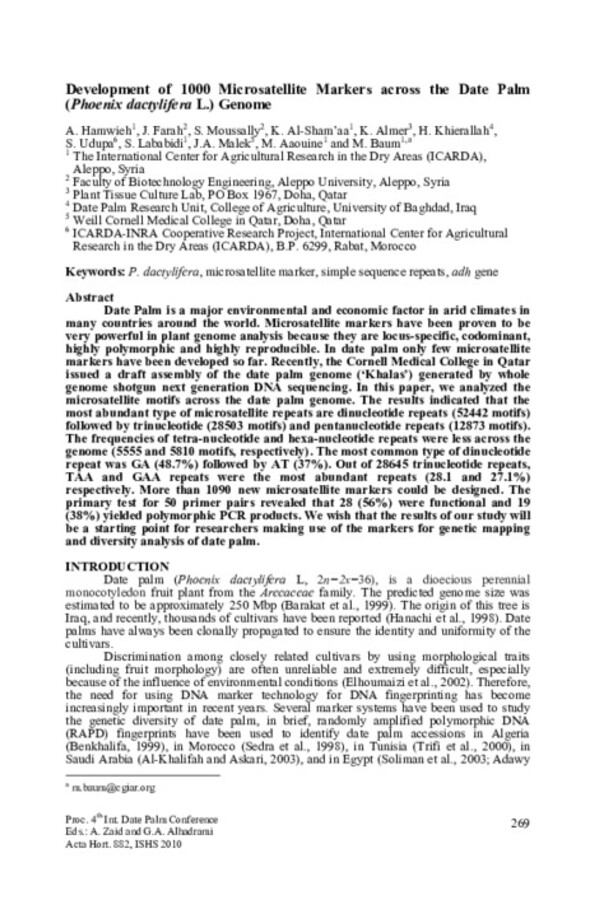
Development of 1000 Microsatellite Markers across the Date Palm (Phoenix dactylifera L.) Genome

Characterization of a prolyl endoprotease from Eurygaster integriceps Puton (Sunn pest) infested wheat

Isolation and sequence analysis of DREB2A homologues in three cereal and two legume species

SuperSAGE: the drought stress-responsive transcriptome of chickpea roots
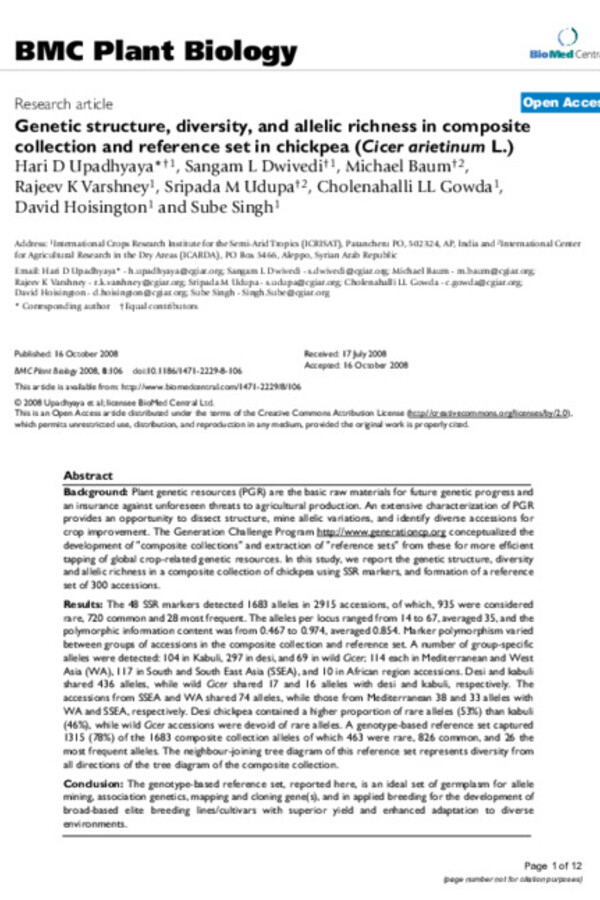
Genetic structure, diversity, and allelic richness in composite collection and reference set in chickpea (Cicer arietinum L.)

Quantitative trait loci associated with adaptation to Mediterranean dryland conditions in barley

Genetic diversity of Rhynchosporium secalis in Tunisia as revealed by pathotype, AFLP, and microsatellite analyses

Differential Selection on Rhynchosporium secalis During Parasitic and Saprophytic Phases in the Barley Scald Disease Cycle

Transcriptional analysis between two wheat near-isogenic lines contrasting in aluminum tolerance under aluminum stress

Resistance gene analogs associated with Fusarium head blight resistance in wheat

Fusarium vascular wilt in lentil: Inheritance and identification of DNA markers for resistance

Genetic diversity of Pinus brutia in Syria as revealed by DNA markers

Conservation of microsatellite flanking sequences in different taxa of Leguminosae

Pathogenic and genetic characterization of Algerian isolates of Fusarium oxysporum f. sp. lentis by RAPD and AFLP analysis

High mutation rate and mutational bias at (TAA)n microsatellite loci in chickpea (Cicer arietinum L.)

Assessment of genotypic variation among cultivated durum wheat based on EST-SSRS and genomic SSRS

A genetic linkage map of lentil (Lens sp.) based on RAPD and AFLP markers using recombinant inbred lines






















